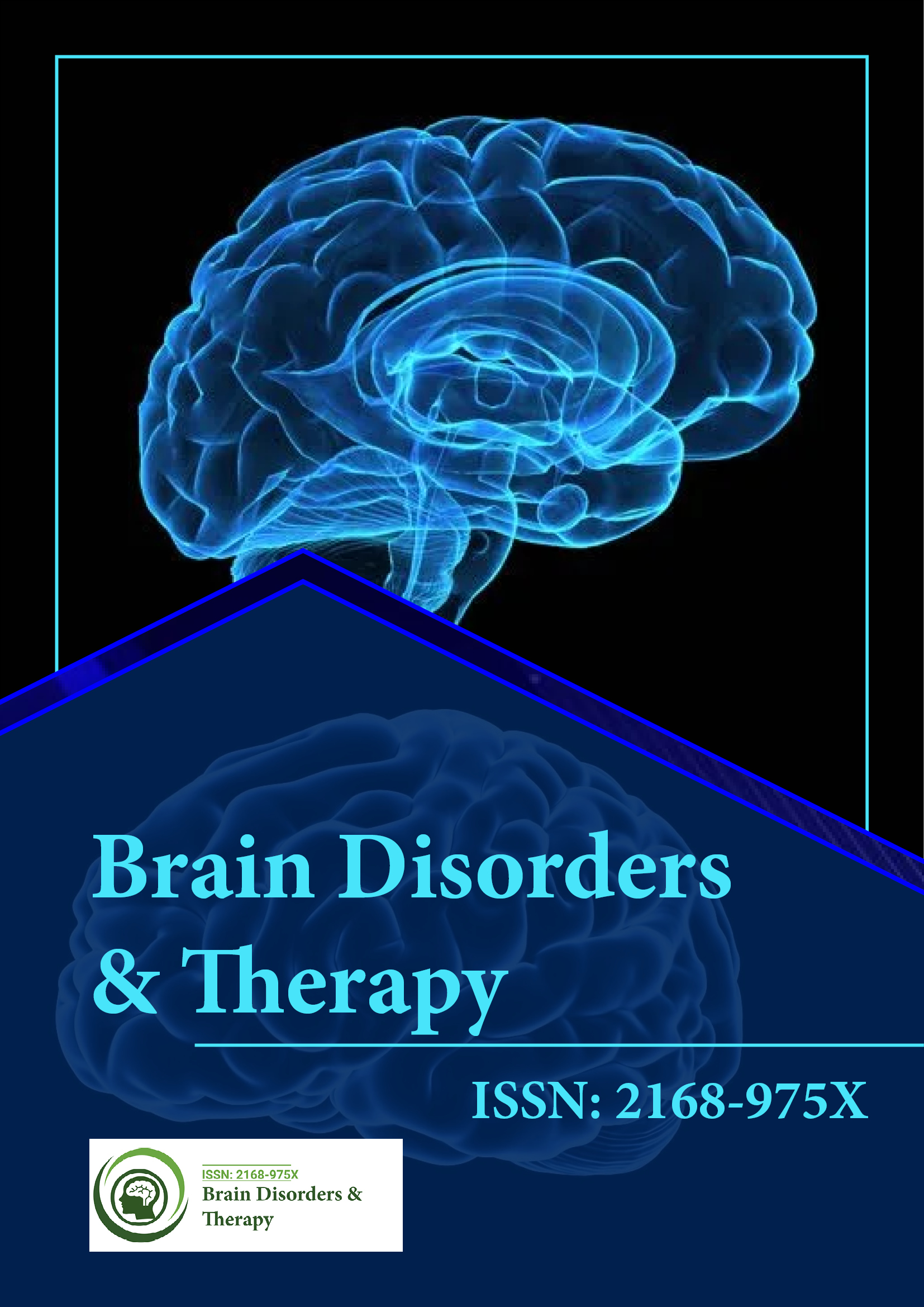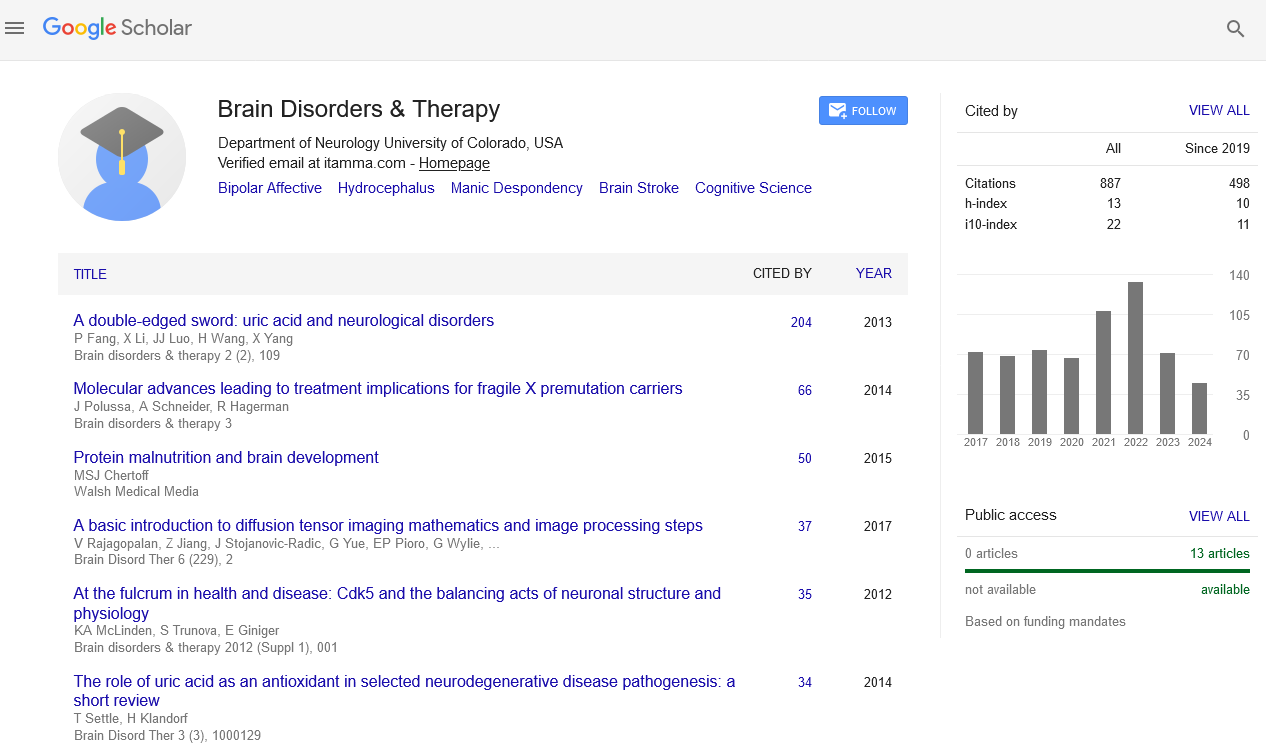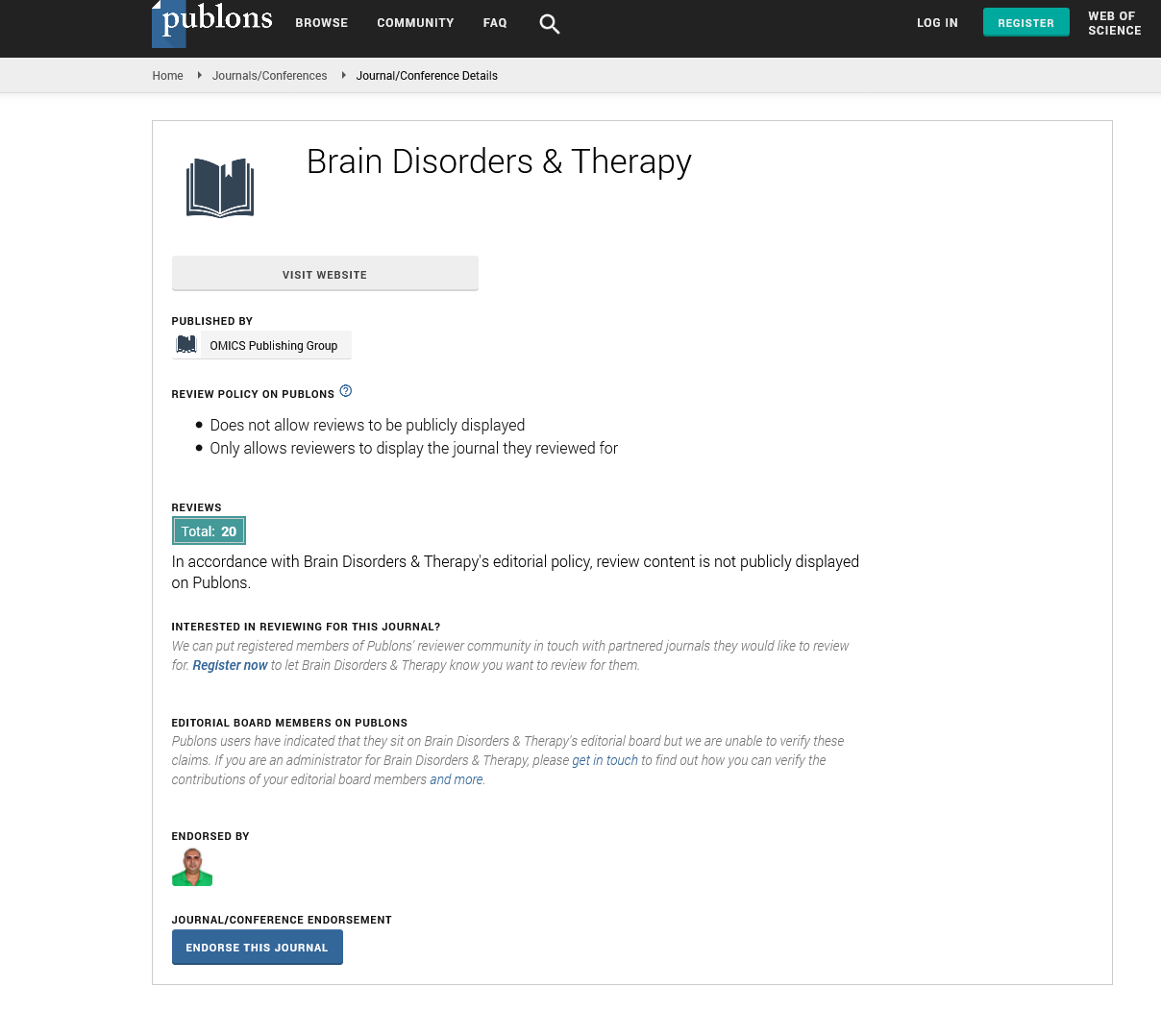PMC/PubMed Indexed Articles
Indexed In
- Open J Gate
- Genamics JournalSeek
- JournalTOCs
- RefSeek
- Hamdard University
- EBSCO A-Z
- OCLC- WorldCat
- Publons
- Geneva Foundation for Medical Education and Research
Useful Links
Share This Page
Journal Flyer

Open Access Journals
- Agri and Aquaculture
- Biochemistry
- Bioinformatics & Systems Biology
- Business & Management
- Chemistry
- Clinical Sciences
- Engineering
- Food & Nutrition
- General Science
- Genetics & Molecular Biology
- Immunology & Microbiology
- Medical Sciences
- Neuroscience & Psychology
- Nursing & Health Care
- Pharmaceutical Sciences
Perspective - (2024) Volume 13, Issue 3
Virtual Reality in Stroke Rehabilitation: Advancing Therapy Through Technology Integration
Muhammad Waris*Received: 26-Aug-2024, Manuscript No. BDT-24-27115; Editor assigned: 29-Aug-2024, Pre QC No. BDT-24-27115(PQ); Reviewed: 12-Sep-2024, QC No. BDT-24-27115; Revised: 19-Sep-2024, Manuscript No. BDT-24-27115(R); Published: 26-Sep-2024, DOI: 10.35248/2168-975X.24.13.276
Description
Virtual reality involves the use of computer-generated simulations that allow users to engage in a three-dimensional environment, typically through the use of headsets, gloves and other sensory equipment. In stroke rehabilitation, VR is designed to mimic real-world tasks, enabling patients to practice motor and cognitive skills in a controlled and safe environment. Unlike traditional rehabilitation methods, VR allows for repetitive practice, precise feedback and task variability, which are crucial for motor learning and neuroplasticity the brain's ability to rewire itself after injury.
VR rehabilitation programs can target various aspects of recovery, including motor function, balance, coordination, cognitive skills and Activities Of Daily Living (ADLs). These programs are often tailored to the specific needs and abilities of each patient, providing a personalized and adaptable form of therapy.
One of the most significant advantages of VR in stroke rehabilitation is its ability to increase patient engagement and motivation. Stroke recovery can be a lengthy and frustrating process and many patients may lose motivation during traditional therapy sessions. VR, on the other hand, offers an engaging and interactive experience that keeps patients motivated and involved in their rehabilitation. The immersive nature of VR, combined with the sense of achievement from completing virtual tasks, encourages patients to continue their exercises, often resulting in greater adherence to rehabilitation programs.
Another key benefit of VR is its ability to provide intensive and repetitive practice, which is essential for motor recovery. Stroke survivors often need to perform hundreds or thousands of repetitions of a particular movement to regain lost function. VR allows for continuous practice without the fatigue or boredom that can accompany traditional methods. Furthermore, VR systems can track a patient’s movements in real-time, providing immediate feedback on their performance. This feedback helps patients correct their movements and gradually improve their motor skills.
In addition to motor recovery, VR has been shown to improve cognitive function in stroke survivors. Many VR rehabilitation programs incorporate cognitive tasks, such as memory exercises, problem-solving challenges and attention training, which can help patients recover cognitive abilities that may have been impaired by the stroke. The combination of motor and cognitive training in a single platform makes VR a comprehensive rehabilitation tool.
Numerous studies have been conducted to evaluate the effectiveness of VR in stroke rehabilitation. Research has shown that VR can significantly improve motor function, balance and ADLs in stroke survivors when compared to conventional therapy alone. A meta-analysis of randomized controlled trials concluded that VR-based interventions resulted in better upper limb motor function and ADL performance than standard rehabilitation.
Furthermore, studies have demonstrated that VR can be particularly effective when used as an adjunct to conventional therapy. Patients who underwent a combination of VR and traditional rehabilitation showed greater improvements in motor function and independence than those who received traditional therapy alone. This suggests that VR can complement existing rehabilitation approaches, enhancing overall outcomes.
Despite its promising benefits, there are several challenges associated with the implementation of VR in stroke rehabilitation. One major limitation is the cost and accessibility of VR equipment. While the price of VR technology has decreased in recent years, it remains relatively expensive, particularly for patients in low-resource settings. Additionally, some patients may have difficulty using VR systems due to physical or cognitive impairments, such as limited range of motion, poor vision, or difficulty following complex instructions.
Conclusion
Virtual reality has emerged as a promising non-conventional tool for stroke rehabilitation, offering immersive and engaging experiences that can enhance motor and cognitive recovery. While challenges such as cost and accessibility remain, the evidence supporting VR’s effectiveness is growing and its potential to transform stroke rehabilitation is undeniable. As technology continues to evolve, VR is likely to become an integral part of stroke recovery programs, helping patients regain independence and improve their quality of life.
Citation: Waris M (2024). Virtual Reality in Stroke Rehabilitation: Advancing Therapy Through Technology Integration. Brain Disord Ther. 13:276.
Copyright: © 2024 Waris M. This is an open-access article distributed under the terms of the Creative Commons Attribution License, which permits unrestricted use, distribution, and reproduction in any medium, provided the original author and source are credited.


